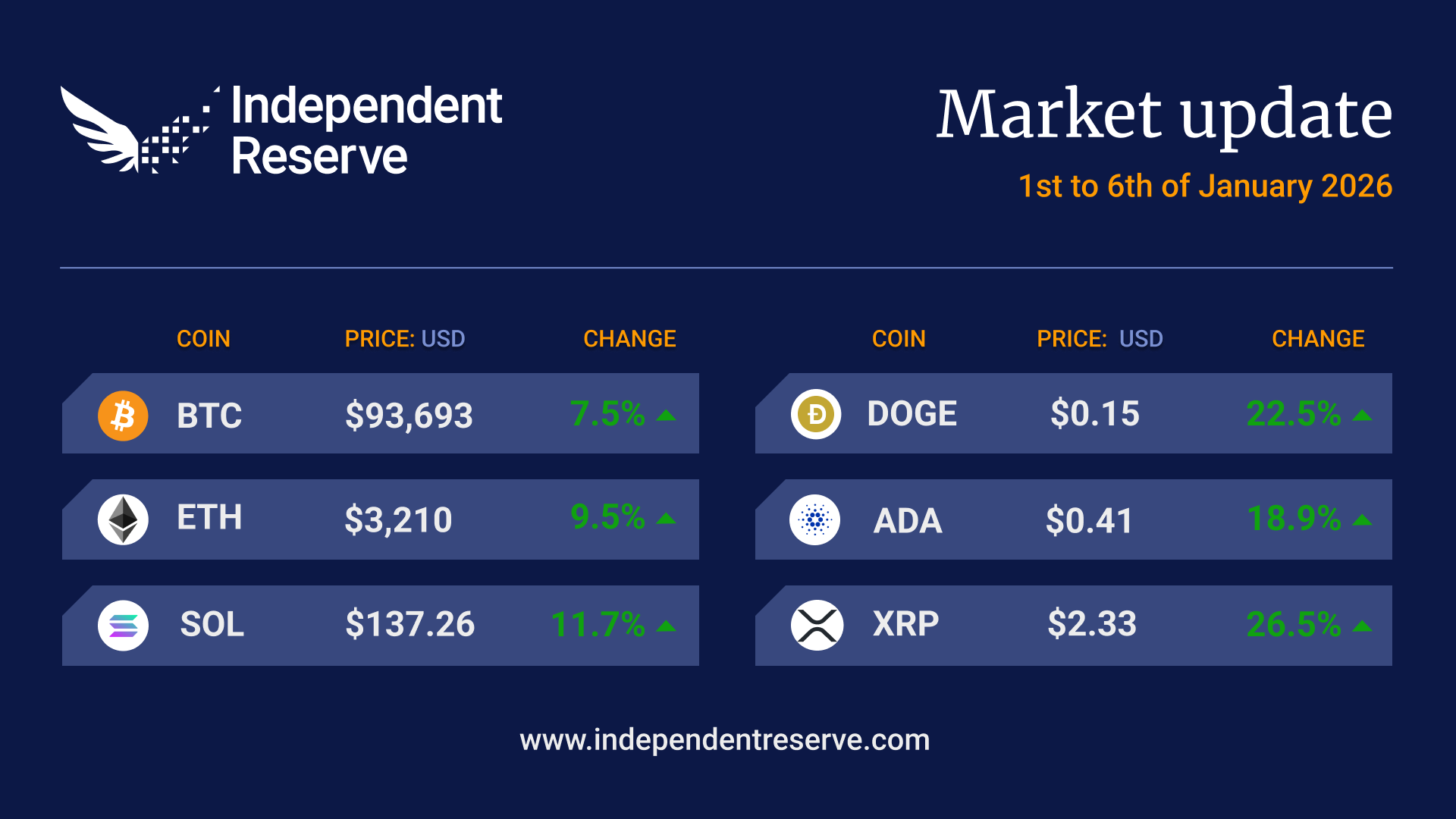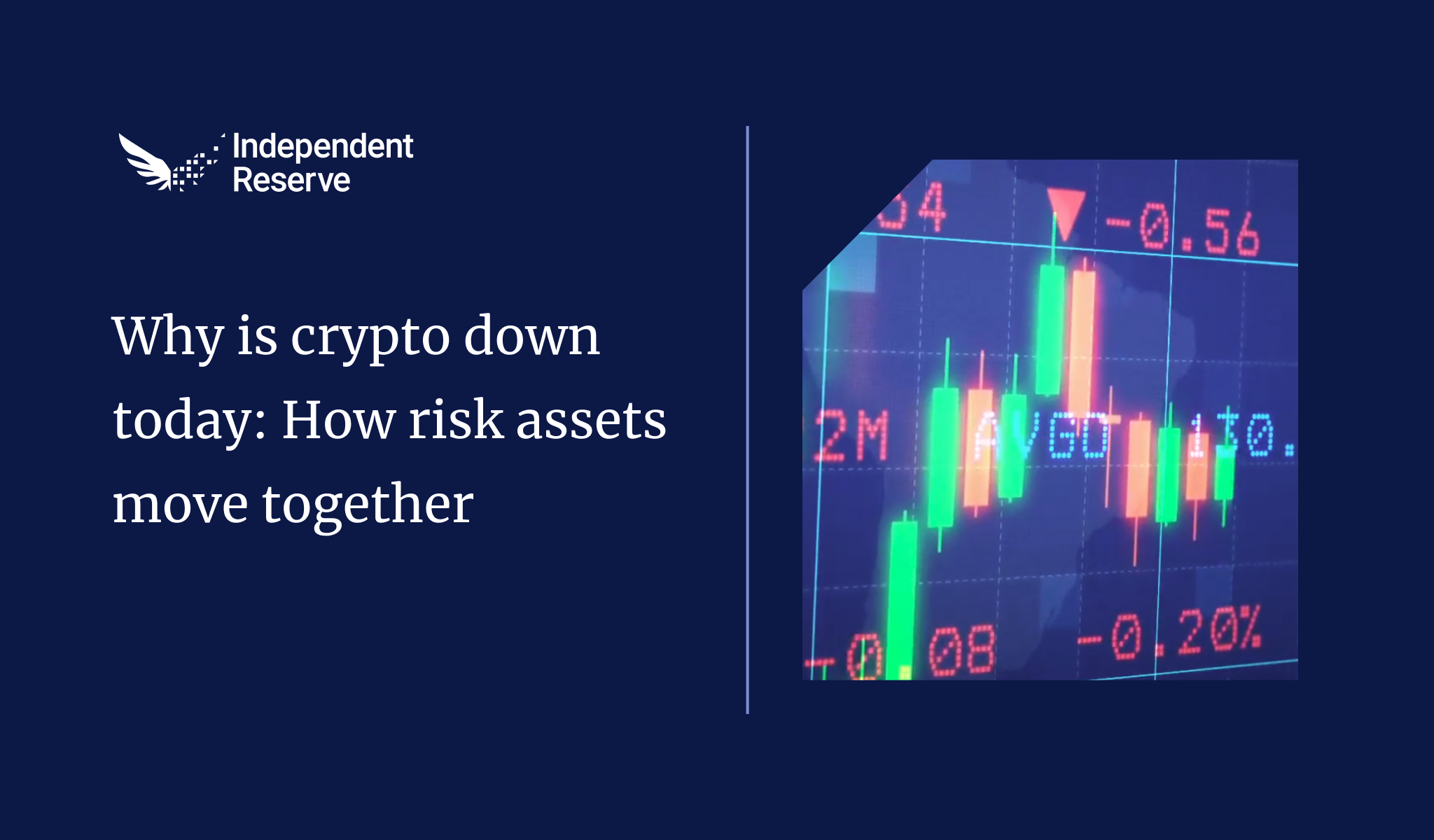In Markets
Bitcoin saw its worst month on record in June with a 38% fall, while Ether lost 47%. Contagion continues among crypto lenders and economists increasingly believe the US may already be in a recession. Adding to the fun, the Reserve Bank of Australia has raised interest rates by 0.5% today and in Turkey, inflation is at an eye watering 79%. But there’s a sense things may finally be stabilising in crypto after an extremely volatile few weeks. “Overall caution is still the name of the game,” Susannah Streeter, a markets analyst at Hargreaves Lansdown, told CoinDesk. Bitcoin is down 4.9% to trade around AU$29,600 (US$20.3K) and Ethereum is down 5.7% to trade around AU$1,675 (US$1,155). XRP lost 9.5%, Cardano (-9.5%) and Solana (-7%). The Crypto Fear and Greed Index is at 14, or Extreme Fear.

From the IR OTC Desk
At today’s July Board meeting, the Reserve Bank of Australia (RBA) increased the underlying cash rate by 50bps to 1.35%. In the Statement, Governor Lowe and the Board have indicated that ‘the Australian economy remains resilient, and the labour market is tighter than it has been for some time’. Concluding that ‘The Board expects to take further steps in the process of normalising monetary conditions in Australia over the months ahead’, a key focus will now move to the June quarter inflation measure, scheduled for release on the 27th of July. Short term interest rate markets are currently pricing in a 3% cash rate for the end of the calendar year. Time will tell whether this forecast tightening will be required.
In the US, 10 year US Treasury Bond yields have moved lower over the last two weeks, to currently trade at 2.95%. To quantify the move, the most recent high in US Treasury 10 year yields was 3.48% on the 14th of June ( just before the Federal Open Market Committee meeting). This change in market pricing has broadly stemmed from a growing concern of slowing growth, and in particular the effects of both inflation and monetary policy on the US consumer. Last Wednesday, we received the GDP Growth Rate QoQ Final Q1, which came in at -1.6% (inflation adjusted). The release highlighted that consumer spending increased by only 0.5% relative to a 0.6% increase in the final quarter of 2021 – the previous estimate being 0.8%. This Friday, we receive the US labour market details for June. It is currently expected that the Unemployment Rate (June) will be maintained at 3.6%. The market and the Federal Reserve will pay close attention to this release pre the 27th of July FOMC meeting.
On the OTC desk, we have seen sellers of stable coins over the course of the week – particularly USDT and USDC. Our BTC flows have been much more balanced, if not skewed to the buy side, as the search for value continues to drive trading direction under a more stabilised market environment. We continue to stress that in a market environment of lesser liquidity, positioning has an ability to push around prices. On the desk we have been working hard on new products and tools that enable delicate execution of orders and we are excited to be able to share those with you shortly! Watch this space.
For any trading needs, please don’t hesitate to get in touch.
In Headlines
Historic quarter for all the wrong reasons
Bitcoin has just endured its worst quarter since 2011, with the price plunging from around AU$60K (US$45K) at the beginning to just under AU$29K (US$20K) at the end. The 56.2% loss was the worst since the third quarter of 2011 when BTC fell 67% to $5.03. The S&P 500 has fallen 20.6% so far in 2022 for the worst start to a year since 1962 – although the ASX lost a more modest 10%. Tesla had to write down its AU$2.2B (US$1.5B) Bitcoin purchase by AU$640M (US$440 million) at the end of the quarter. There are now 22 failed stablecoins after FlexUSD collapsed. More than 80,000 Bitcoin millionaires have been wiped out since the ATH in November last year. But prices trending lower saw the number of “wholecoiners” top 860,000.

“Wholecoiner” addresses recently hit an all-time high | Glassnode
Tax time
It’s a new financial year, which means that if you bought or sold crypto in the past 12 months, you’ll need to lodge your taxes. Independent Reserve makes tax time easy by allowing you to generate a tax summary – powered by KPMG. Alternatively, you can download your transaction and order history reports for a granular view. For more details on Australian crypto tax reporting requirements, check out our blog.
Ethereum is less difficult
The difficulty bomb has been delayed with the Gray Glacier hard fork. The bomb was optimistically added in 2016 as a way to encourage miners to switch to Proof of Stake, and eight years later we’re still waiting. September is now firming up for The Merge, with the second last ever trial being conducted on the Sepolia testnet this week. Odin-free.eth told his 25K followers the Merge is super bullish for ETH prices: “Ethereum miners received $549 million (AU$798M) in June 2022 and dumped on us. Soon they receive 0 and we burn, us happy.” Gas fees have fallen to ETH 0.0015 (AU$2.47) – a number last seen in December 2020.

Carbon credits on the blockchain
Australian carbon trading platform BetaCarbon sold “tokenised” Australian Carbon Credit Units using ANZ Bank’s stablecoin A$DC to private investor Victor Smorgon Group. BetaCarbon tokenises Australian Carbon Credits into BCAU, with each representing 1kg of carbon captured, and all projects are verified by the Clean Energy Regulator.
Cardano getting smarter
Over on ‘ETH killer’ Cardano, they’re gearing up for the Vasil upgrade in a few week’s time. While smart contracts have already been enabled, they don’t work very well, explained the host of Coin Bureau: “Cardano’s smart contract functionality was initially fairly simple, to put it mildly. And this meant that it was very difficult for decentralized applications to actually deploy.” That’s set to change with the hard fork successfully launched on testnet. It’s expected to speed up block creation, promote interoperability with sidechains, lower costs, and offer better scalability for DApp creators.
MiCA
The European Union has finalised its MiCA crypto regulation, which, among other things, would cripple stablecoins with a cap of US$200M in volume per day (Tether’s volume in the past day was US$53.4B). The EU also decided on new Anti Money Laundering laws that mean customers need to be verified before even the smallest transfer between regulated digital wallet providers. However “unhosted” private wallets have been left out of the regulations.

Contagion
BlockFi, which had to liquidate a US$1 billion (AU$1.45B) loan to Three Arrows Capital, will live to fight another day. CEO Zac Prince said the platform has a deal with FTX for a US$400M (AU$581M) line of credit, enabling FTX to buy the lending platform for US$240M (AU$349M). Voyager, Vauld and CoinLoan have all suspended withdrawals while Genesis Trading is reportedly facing hundreds of millions in losses. Celsius is busily paying off loans left right and centre in an attempt to avoid bankruptcy and get itself operational again. 3AC itself has been ordered into liquidation by a British Court and filed Chapter 15 bankruptcy in the US. Hilariously, 3AC filed its own application for liquidation and attempted to make founder Su Zhu one of the debtors it owed money to. On the upside, JPMorgan strategist Nikolaos Panigirtzoglou believes the rapid and traumatic wave of deleveraging is coming to an end.
Good news for Ripple
Ripple cofounder Jed McCaleb’s eight year dumpathon of billions of XRP is also coming to an end. McCaleb departed Ripple with 9 billion XRP back in 2014 and has been selling as much as 2.74B XRP a year since. He’s now down to his last 81.53M and at current rates of selling will run out this month.
Inhale the hopium
Quantum Economics founder Mati Greenspan took issue with the idea that June was Bitcoin’s worst ever month, claiming the network instead saw “record growth”. “Over the last 90 days the Bitcoin blockchain has transferred an average of $66.4 billion (AU$96.5B) per day, an all time record high. That’s 13x the volume of Jan-2020 when the price was $10,000 (AU$14.5K) per coin.” Economist Alex Kruger also takes heart from the ATH trading volume, pointing out that “As a general rule, trading volume is the highest when markets capitulate, and such capitulation creates major bottoms.” He said record volumes were seen at the 2020 and 2021 bottoms and thus encouraged followers to “inhale’ the hopium.
Until next week, happy trading!


